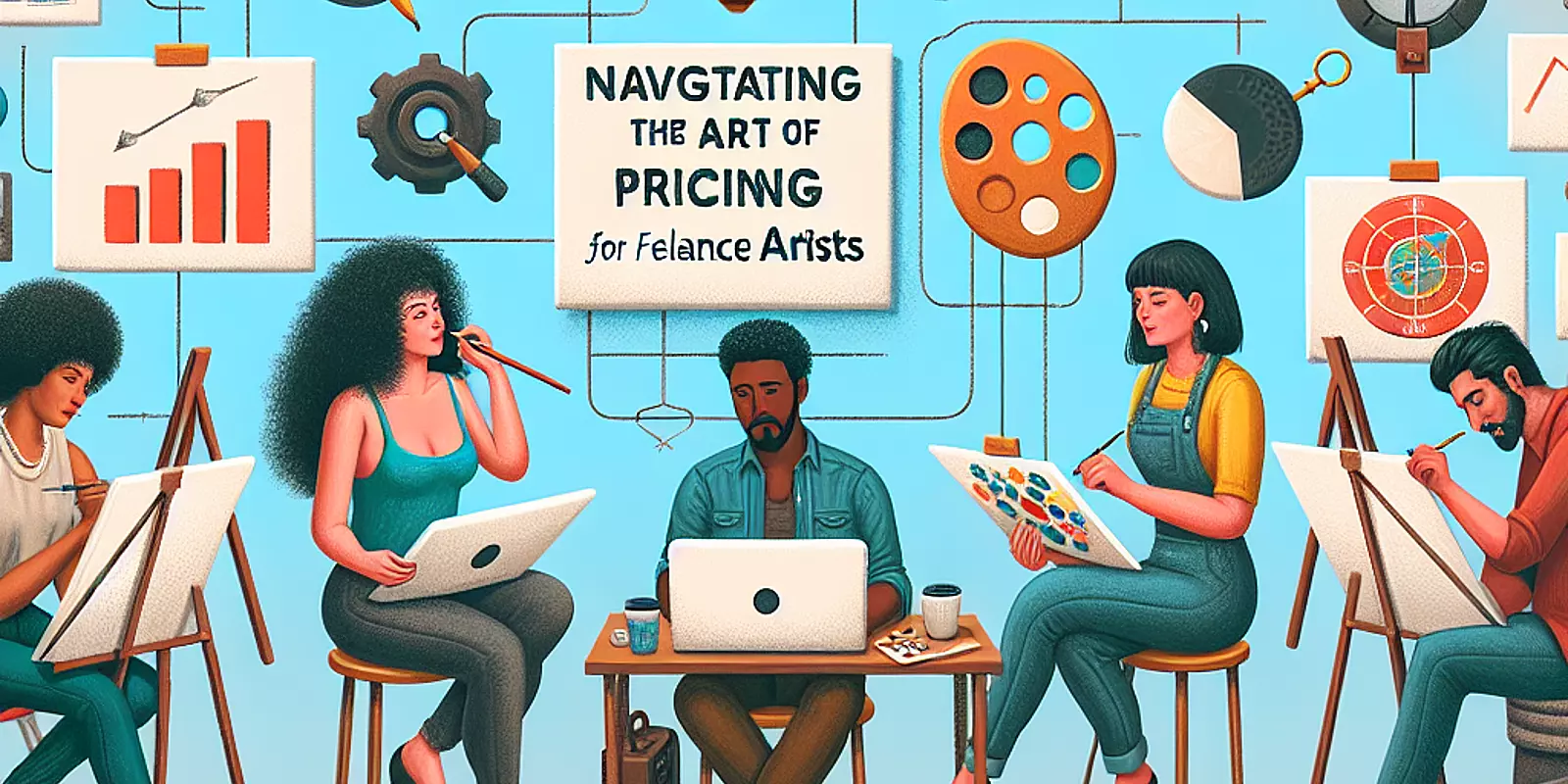
In the dynamic world of freelance artistry, especially in digital art and 3D modeling, pricing extends beyond simple figures. It reflects the blend of an artist's skills, creativity, and time investment, serving as a crucial part of their business strategy. For freelance artists negotiating this competitive arena filled with startups and mid-sized firms, crafting a pricing strategy that mirrors their artistic value is vital. Striking this balance between creative talent and business acumen allows artists to earn a sustainable income while fostering long-term client relationships.
Realizing one's worth is the foundation of an effective freelance pricing strategy. This includes a comprehensive grasp of not just technical skills and artistic flair but also experience and market demand. Artists should assess their unique strengths—whether it’s superior rendering techniques or the ability to bring intricate concepts to life. This self-awareness is crucial for setting a price that truly reflects expertise.
Conveying this value to potential clients is equally important. Artists need to clearly show how their skills and past projects cater to client needs, delivering a direct return on investment through compelling work. Conducting market research helps artists understand what peers charge, keeping them competitive without undervaluing their services. Art marketing strategies and adapting to current demand and economic factors are essential for maintaining relationships and ensuring economic sustainability.
Understanding market rates is vital for setting competitive yet equitable prices. Artists can gather data on standards through methods such as exploring online platforms like Behance and ArtStation, which provide insights into peers' pricing. Additionally, freelance marketplaces like Upwork and Fiverr offer a glimpse into pricing structures within specific niches.
Conducting surveys among fellow artists can offer first-hand data on pricing influences. Industry publications provide deeper insights, showcasing average rates and trends in the field. This informed approach allows artists to articulate the value of their skills in the marketplace, ensuring their pricing strategy not only reflects expertise but also meets client expectations.
In the fluid landscape of freelance art, adopting dynamic pricing strategies is crucial. Monitoring project demand helps artists adjust their rates according to trends. By understanding seasonal patterns, artists can increase rates during peak periods and lower them during slower times to maintain a steady income.
Client feedback plays a crucial role in this process. Engaging with clients about satisfaction and perceived value helps justify future rate increases. Implementing a tiered pricing model, where higher rates apply for more complex projects or expedited turnarounds, meets varying client needs without compromising an artist’s value. Ongoing market research into competitors' strategies ensures artists remain competitive, acknowledging their unique skills.
For freelance artists, particularly in architectural visualizations, achieving stable income and preserving client relationships is paramount. Developing a tiered pricing model that differentiates service levels can attract a wider client base and fairly reward high-value projects. Establishing retainer agreements with clients seeking ongoing work can secure income and build trust.
Maintaining regular communication with clients about the value they receive, especially as project scopes evolve, helps avoid pricing concerns. Regular market research supports competitiveness, adjusting to demand changes without diminishing value perception. Fostering strong relationships and valuing work appropriately helps artists develop a resilient income model that withstands market fluctuations.
Navigating the shifting landscape of freelance art pricing involves adaptability and a proactive approach. Artists, especially in architectural visualizations, need to reassess pricing strategies regularly to align with market demands and their intrinsic value. Comprehending client relationships and the competitive digital art marketplace helps artists make informed adjustments to rates, reflecting true worth.
Looking forward, embracing technological advancements and emerging trends can elevate work quality and open new revenue channels. By committing to continuous improvement and flexibility, artists can thrive in confidence, supported by robust pricing and their artistic vision.